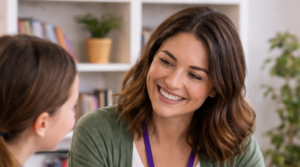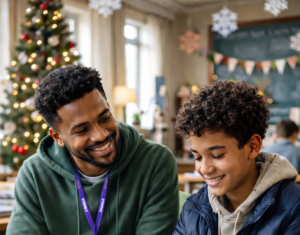Creativity isn’t just a fun addition to mentoring – it’s often the key that unlocks progress. For young people with SEMH and SEND, traditional approaches don’t always reach the emotional depth required to support healing and engagement. But when mentoring includes the likes of music, art, and dance, it offers something different: a non-judgemental way to connect, express, and rebuild confidence.
What Creativity Unlocks That Words Sometimes Can’t
For children with SEMH (Social, Emotional, and Mental Health Needs) or SEND (Special Educational Needs and Disabilities), language often isn’t the first tool they reach for.
So, in a world that can feel overwhelming, a creative outlet offers something rare.
safety without pressure.
- Visual art to explore and manage emotional states.
- Music as a medium for self-regulation and focus.
- Narrative work to support emotional insight and connection.
Some students communicate most clearly through what they create – whether that’s a drawing, a soundscape, or a written story. For those who struggle with verbal expression, creative mediums can provide a more accessible and authentic way to express thoughts and feelings.
That’s why creativity isn’t an ‘add-on’. It’s a bridge.
Creative Mentors Bring More Than Skills
At Lexia Education Services, many of our mentors come from creative walks of life – musicians, dancers, athletes, artists. They don’t just bring talent; they bring new language. A way of connecting that relies more on inspiration than instruction.
When a young person meets a mentor who understands their creative drive – or introduces one they didn’t know they had – it can light a spark.
We’ve seen it happen:
- A mentor and child creating music together, sharing ideas – this helps the child learn to work with others.
- A graffiti project, using their imagination – this helps the child express their thoughts without the use of words.
- A dance or sport-based session – this helps the child focus their energy in a positive way.
The result? Children begin to trust again. Not just others – but their own voice.
From Feeling Invisible to Feeling Proud
Before creativity, many of these young people feel invisible. Misunderstood. Reduced to behaviour charts and detentions.
But give them the tools to create something – and they begin to see themselves differently.
We have a mentor working with a student who had been permanently excluded. Angry, guarded, and convinced he’d already “messed it all up.” His mentor – a musician/DJ – invited him to create music with him.
That small act unlocked something huge.
Weeks later, that same child was creating his own songs, learning to play instruments, and taking after school music lessons. This helped the child pick his feet back up and go back to school.
Creativity Builds Community
There’s something beautifully equalising about creating together. No status, no power dynamics. Just moments of trust, and collaboration.
When mentors and young people create side by side, something shifts:
- Trust is grown.
- Emotions are expressed.
- Confidence is Created.
Creative mentoring plans such as using collaborative environments have proven particularly effective in engaging students who have experienced exclusion. These plans allow young people to contribute meaningfully to something visible and valued within the school environment.
Why This Approach Matters Now More Than Ever
Traditional systems often focus on containment: keeping students calm, compliant, and focused on their work.
But creative mentoring looks beyond these restrictions. It asks:
- What does this young person need to express?
- How can we help them find passion in learning?
- Who might they become if given the space to explore?
We’re not here to police behaviour. We’re here to help unlock potential.
At Lexia Education Services, that’s meant:
- A teen with SEMH becoming the heartbeat of a school music group
- A student with SEND using a pen and paper, to express their ideas.
- A child with ADHD using dance to focus their energy on a new skill.
These aren’t one-off successes. They’re reminders that creativity changes trajectories.
The Confidence to Believe Again
Confidence doesn’t come in a loud voice or perfect grades.
It comes in moments:
- When a child tries something new and is met with encouragement, not criticism
- When a mentor listens – not just to words, but to with how the student expresses their feelings.
- When a young person realises, they’re good at something – and they like who they are when they’re doing it
Creative mentoring isn’t about fixing children. It’s about freeing them.
Because when young people with SEMH or SEND discover creative self-expression, they’re not just managing school – they’re imagining futures.
And that’s where true confidence begins.
If your child, student, or school could benefit from this kind of support, we’d love to talk.
Email us or Apply now
to one of our rewarding and long-term roles and let’s explore what’s possible.
FAQs:
Q: Does creative mentoring replace academic support?
A: No – it enhances it. When students feel confident and connected, they’re more ready to engage with schoolwork.
Q: Is this just for students who love art?
A: Not at all. Many students discover creative passions they never knew they had.
Q: How do I get started with Lexia?
A: Just press the job vacancies button at the top of the site. You can apply for a mentor position and see what the future holds for you.
Creativity doesn’t just build confidence. It rebuilds connection and self-belief.



